We use information collected through cookies and similar technologies to improve your experience on our site, analyze how you use it and for marketing purposes.
Your privacy settings
We and our partners use information collected through cookies and similar technologies to improve your experience on our site, analyze how you use it and for marketing purposes. Because we respect your right to privacy, you can choose not to allow some types of cookies. However, blocking some types of cookies may impact your experience of the site and the services we are able to offer. In some cases, data obtained from cookies is shared with third parties for analytics or marketing reasons. You can exercise your right to opt-out of that sharing at any time by disabling cookies.
Manage Consent Preferences
Necessary
Always ON
These cookies and scripts are necessary for the website to function and cannot be switched off. They are usually only set in response to actions made by you which amount to a request for services, such as setting your privacy preferences, logging in or filling in forms. You can set your browser to block oralert you about these cookies, but some parts of the site will not then work. These cookies do not store any personally identifiable information.
Analytics
These cookies and scripts allow us to count visits and traffic sources, so we can measure and improve the performance of our site. They help us know which pages are the most and least popular and see how visitors move around the site. All information these cookies collect is aggregated and therefore anonymous. If you do not allow these cookies and scripts, we will not know when you have visited our site.
Embedded Videos
These cookies and scripts may be set through our site by external video hosting services likeYouTube or Vimeo. They may be used to deliver video content on our website. It's possible for the video provider to build a profile of your interests and show you relevant adverts on this or other websites. They do not directly store personal information, but are based on uniquely identifying your browser and internet device. If you do not allow these cookies or scripts it is possible that embedded video will not function as expected.
Google Fonts
Google Fonts is a font embedding service library. Google Fonts are stored on Google's CDN. The Google Fonts API is designed to limit the collection, storage, and use of end-user data to only what is needed to serve fonts efficiently. Use of Google Fonts API is unauthenticated. No cookies are sent by website visitors to the Google Fonts API. Requests to the Google Fonts API are made to resource-specific domains, such as fonts.googleapis.com or fonts.gstatic.com. This means your font requests are separate from and don't contain any credentials you send to google.com while using other Google services that are authenticated, such as Gmail.
Marketing
These cookies and scripts may be set through our site by our advertising partners. They may be used by those companies to build a profile of your interests and show you relevant adverts on other sites. They do not store directly personal information, but are based on uniquely identifying your browser and internet device. If you do not allow these cookies and scripts, you will experience less targeted advertising.
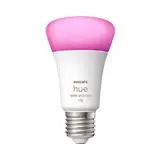
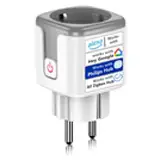
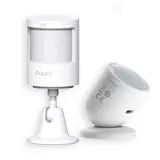
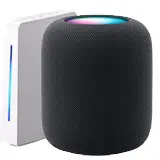
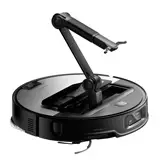
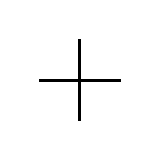
Baby Sleep Monitors: What Technology Is Best?
Worried about your baby's sleep quality? You're not alone! Baby sleep monitors have become an essential accessory for many parents. But, with so many options available, how do you know which is the best technology for you and your little one? This article will guide you through the maze of sleep monitors, from the most basic to the most sophisticated, so you can make an informed decision and sleep (at least a little!) more soundly.
Why Use a Baby Sleep Monitor?
A baby sleep monitor can offer peace of mind and help you better understand your child's sleep patterns. They can detect movement, sounds, and even blood oxygen levels, depending on the model. This lets you respond quickly to any problems and ensure your baby is safe and comfortable while sleeping.
Besides peace of mind, some monitors offer valuable data that can help you improve your baby's sleep. You can track how long they sleep, how many times they wake up, and what factors seem to affect their sleep. With this information, you can create a more effective sleep routine and address any underlying issues.
Types of Baby Sleep Monitors: An Overview
The market offers a wide variety of baby sleep monitors, each with its own features, advantages, and disadvantages. Here's a summary of the most common types:
Audio Monitors: The Easiest and Most Affordable Option
Audio baby monitors are a popular choice for many parents, especially those looking for a simple and affordable solution. They're easy to use and generally don't require any complicated setup. Just put the transmitter in the baby's room and carry the receiver with you. They offer the peace of mind of knowing you can hear your baby if they cry or make any noise.
Advantages of Audio Monitors:
Drawbacks of Audio Monitors:
Video Baby Monitors: A Closer Look at Your Baby's Sleep
Video monitors take safety and peace of mind to a new level. They let you see your baby in real-time, even in the dark, thanks to night vision. Many models also offer features like zoom, remote pan, and two-way communication, allowing you to talk to your baby to soothe them without having to go into the room.
Advantages of Video Monitors:
Disadvantages of Video Monitors:
Motion Monitors: Advanced Detection for Enhanced Security
Motion monitors use sensors, typically placed under the mattress, to detect the baby's movement. Some models alert you if they don't detect movement for a certain period, which can be especially helpful for babies at risk of sleep apnea or SIDS (Sudden Infant Death Syndrome).
Benefits of Movement Monitors:
Disadvantages of Movement Monitors:
Wearable Monitors: Detailed Sleep Data for Your Baby
Wearable baby monitors are small devices that are attached to the baby, usually on the ankle or diaper. They track data like heart rate, oxygen levels, temperature, and sleep patterns. This information is sent to an app on your smartphone or tablet, where you can view and analyze it.
"Benefits of Wearable Monitors:"
Drawbacks of Wearable Monitors:
Smart Baby Monitors: Connected and Personalized for Your Baby
Smart baby monitors combine the features of video monitors and wearables with Wi-Fi connectivity and advanced software functions. They allow you to access data from your smartphone or tablet, receive customizable notifications, and analyze your baby's sleep patterns. Some models even offer features like calming music, night lights, and growth tracking.
Benefits of Smart Monitors:
Disadvantages of Smart Monitors:
What Sleep Tracker is Right for You? Factors to Consider
Choosing the right baby sleep monitor depends on several factors, including your budget, needs, and personal preferences. Here are some things to consider:
Additional Features to Consider
In addition to basic sleep trackers, there are a number of extra features that might be important to you:
Safety First: Tips for Using Sleep Monitors Safely
It's crucial to remember that while sleep trackers can offer peace of mind, they don't replace direct care and supervision. Also, it's essential to use them safely:
Recommendations and Best Practices for Safe Infant Sleep
Using a sleep monitor is just one piece of the safe baby sleep puzzle. Here are some additional recommendations for creating a safe and healthy sleep environment:
Conclusion: Choose the Sleep Monitor That Best Fits Your Family
Choosing the best baby sleep monitor is a personal decision. Consider your needs, your budget, and your preferences when making a decision. Remember, the monitor is a tool to give you peace of mind and help you better understand your baby's sleep patterns, but it doesn't replace hands-on care and supervision. Ultimately, the goal is to create a safe and healthy sleep environment for your little one. Share this article with other parents who are looking for information about baby sleep monitors and let us know in the comments what kind of monitor you use!
Related Posts
How to schedule routines to help children with their schedule
Feeling like you're juggling plates, trying to keep your kids' schedules straight? Breathe! You're not alone. Family life can be chaotic, but a good routine can be your secret superpower. Creating effective routines for kids isn't just about organization; it's about providing them with security, predictability, and a foundation…
Motion Sensors for Kids: How to Ensure Their Safety?
Motion sensors have become ubiquitous. We find them in toys, nightlights, and home security systems. For children, these devices can be fascinating and useful. But, how do we ensure their safe use? Motion Sensors for Kids: A Parent's Guide This article explores how to choose, …
Baby monitors: what are the best options?
Welcome to the world of baby monitors. Expecting a baby? Or do you already have one at home and are looking for the peace of mind of being able to check on your little one from anywhere? Then you're in the right place. Baby monitors have evolved a lot. They're no longer just devices…
Smart night lighting for kids' rooms
Bedtime can be a challenge, especially with young children. Creating a calm and safe environment is crucial for restful sleep. A powerful tool to achieve this is smart night lighting for children's rooms. We're no longer talking about a simple dim light, but a system that adapts to the needs…